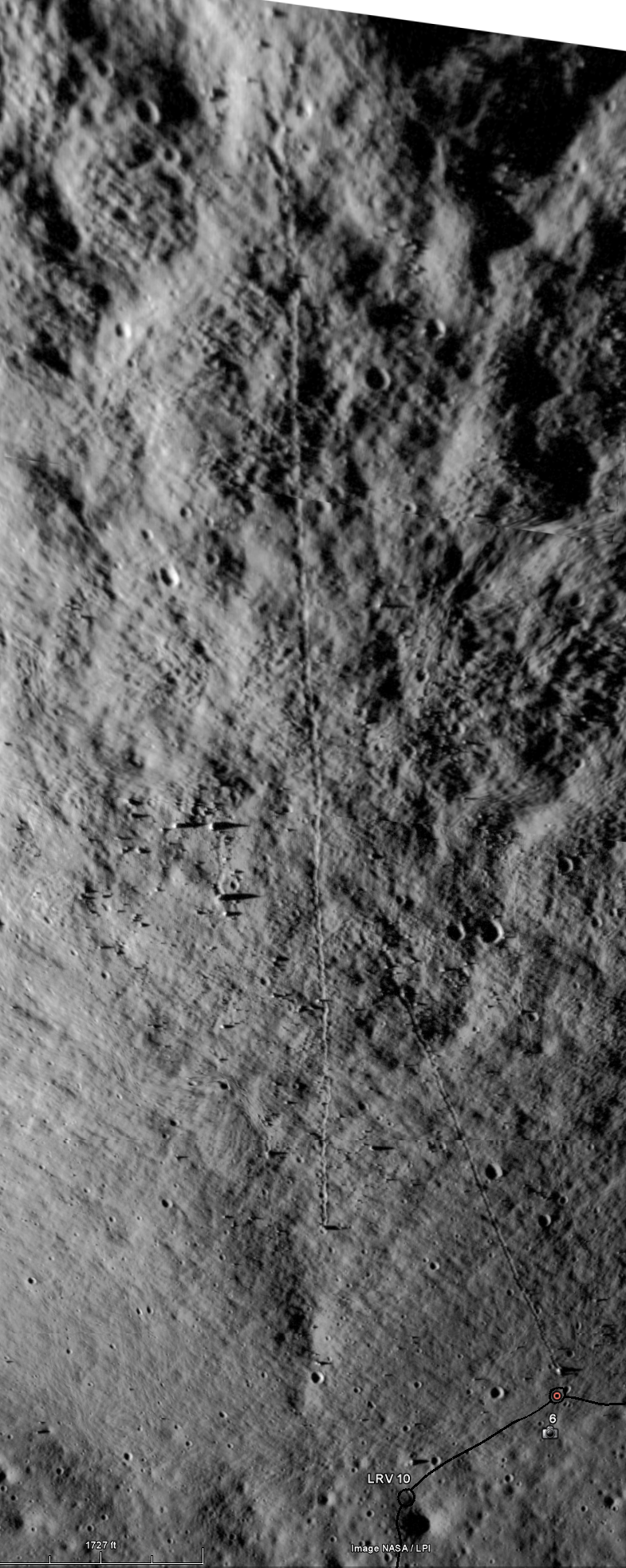|
The Enigmas on the Moon |
|||
|
..
Tracy’s Rock Source: ALSJ (AS17-140-21496) For the third extravehicular activity (EVA) period, the astronauts headed to the northeastern corner of the Taurus-Littrow valley in order to characterize the North Massif: a large, displaced section of the Moon’s crust located at the edge of the Serenitatis Basin. The main goal of this EVA was to study the massif’s formation and its relationship to the basin's rim. At Station 6, the astronauts found a large boulder that had rolled down the side of the North Massif. In the half hour that the astronauts spent near the boulder, Schmitt demonstrated the benefits of sending a professional geologist to the Moon. The boulder contained two distinct rock types—a blue-gray breccia in contact with a light tan fine-matrix breccia. By examining the contact area between the two rock types, Schmitt was able to determine that the tan rock had picked up the blue-gray rock during a major shock event (a meteor impact) and he determined that this event was likely the same that created the Serenitatis Basin (for more information on Schmitt’s thought process on that conclusion, read his commentary on the topic). This evidence suggested that North Massif was created by the impact that created the basin. While Schmitt was studying the boulder, Cernan was
moving around and gathering samples. In doing so he discovered a shelf
on one side of the boulder that was covered in dust, which he sampled.
The traces of Cernan’s sampling were clear in the photograph taken of the
site, and after the mission Cernan wished that he had written his daughter’s
name in the dust on the shelf. From that point on the boulder became known
as Tracy’s Rock in honor of Cernan’s daughter.
|
|||
| Geology Station 6
164:52:44 Schmitt: Okay. I'm going to stay out from between the rocks. It's a beautiful east-west split rock. It's even got a north overhang that we can work with. (Pause) And let me see what it (the boulder) is! We're right at station 6. You wouldn't believe it. 164:53:08 Cernan: I would. Oh, man, what a slope!
|
|||
|
Apollo 17 Tracy's Rock ..
..
...
|
|||
| FAIR USE NOTICE: This page contains copyrighted material the use of which has not been specifically authorized by the copyright owner. Pegasus Research Consortium distributes this material without profit to those who have expressed a prior interest in receiving the included information for research and educational purposes. We believe this constitutes a fair use of any such copyrighted material as provided for in 17 U.S.C § 107. If you wish to use copyrighted material from this site for purposes of your own that go beyond fair use, you must obtain permission from the copyright owner. | |||
|
|




